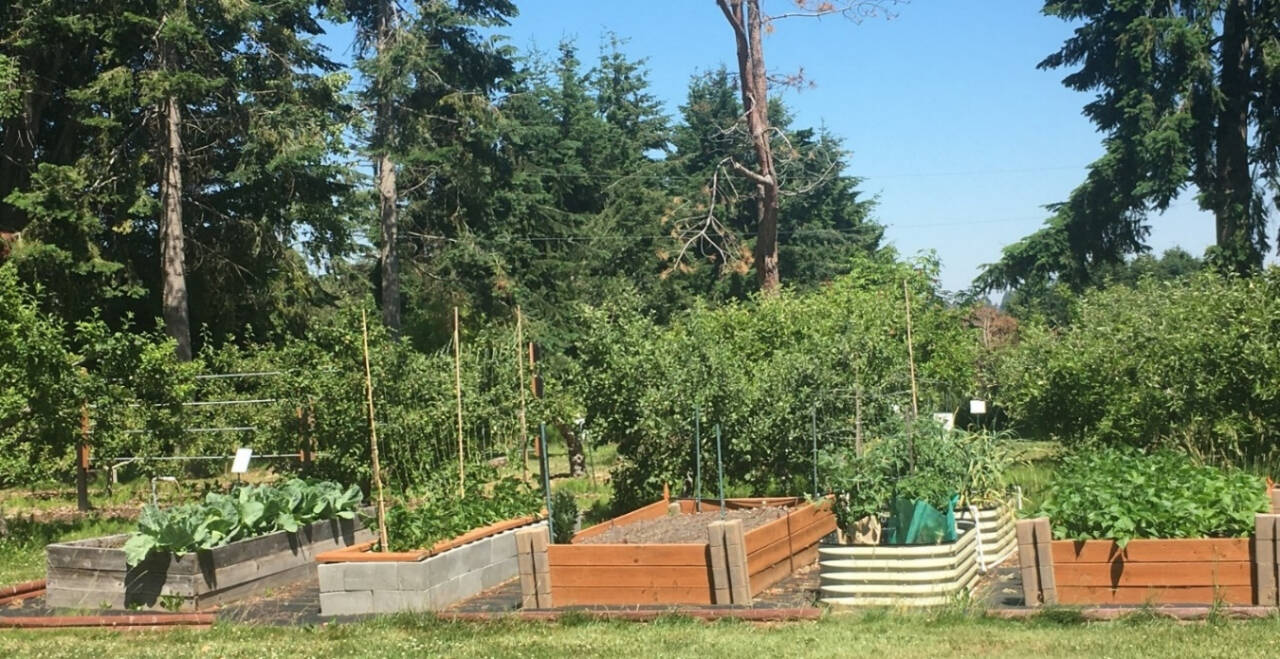An accessible garden reduces many of the physical barriers of gardening and reshapes traditional approaches to fit what a person can do. There are no hard and fast rules about creating an accessible home garden, but there are helpful tips.
This is the third in a series of four articles that offer tips on planning and constructing an accessible garden. Tips 1-3 discussed the importance of proper location, suitable size and, most importantly, safety.
This article will discuss Tip 4: design planting areas for your unique capabilities.
Four types of garden structures that most readily accommodate the physical challenges of gardening are: raised beds, elevated beds, vertical gardens, and container gardening.
The purpose of these structures is to raise the garden to a comfortable working height. Selecting the garden structure(s) that best suits the gardener’s capabilities can help prevent injuries as well as extend the years of successful gardening.
Raised beds are built of various materials, usually in fixed, bottomless structures that hold large amounts of soil. The raised height of the soil surface reduces the need to squat or kneel to work the soil.
The height of a raised bed depends on the gardener’s needs: in most cases, the higher the better.
The recommended width is 2-4 feet (4 feet only if the bed is accessed from both sides).
For both height and width decisions, consider not just the present need but what new accommodations may be required in the future.
Elevated beds are beds on legs with open space below to allow the gardener to stand or sit, perhaps in a wheelchair, as at a desk. The bed is usually built of wood.
The open space underneath the bed between support legs is designed to allow room for a chair or wheelchair and the person’s legs to fit. Ideally this should be 30 inches off the ground. Like the raised planter, the bed should be no more than 4 feet wide if worked from both sides, or less than 2 feet wide if access is only from one side.
The depth of the elevated bed should be limited to no more than 10-12 inches. The weight of the soil can be considerable, particularly when the soil is wet. A bed depth of more than 12 inches can also restrict the reach and comfort of the seated gardener.
Raised beds are ideal for shallow rooted crops or flowers. Many, such as lettuce, arugula, spinach and strawberries can grow in as little as 6 inches of soil.
Vertical gardening entails growing plants on upright or hanging structures. This technique brings the vegetation into easy reach. It uses less garden space and can keep plants healthier.
Upright vertical structures can be as simple as attaching a felt pocket planter to a wall. Other ideas are growing squash or gourds from a sturdy arbor; planting between the slats of a wooden pallet turned upright; and making a green bean tepee out of bamboo poles.
Hanging structures are only limited by weight and imagination. Flower baskets are the most obvious way to add a pop of color but think about growing some shallow rooted crops (mentioned above) in a hanging basket. And, the basket doesn’t need to be a basket: grow strawberries or tomatoes through vertical holes in a hanging five gallon bucket or other container.
Container gardening is a quick and inexpensive way to get an accessible garden started. Containers can be made out of any non-toxic material. They can also be any size and shape as long as they hold enough soil with good drainage to grow what you desire.
These containers, which are often very large, can be placed in a convenient location, nearby on the deck or patio, or next to the door for easy access. Large flower or vegetable pots can be tended from a sitting or standing position.
There is a myriad of building plans and ready made products available for accessible gardens online. Do a computer search for “Accessible Gardening” (and similar prompts) and find commercial products (.com), educational information (.edu) and organizations (.org) to aid in developing a plan.
The fourth and final article in the series on accessible gardening will be Tip 5 and Tip 6, which will go into more detail about adaptable tool selection and other support systems.
Anna Plager is a Master Gardener of Clallam County who has used accessible gardening practices for many years.


